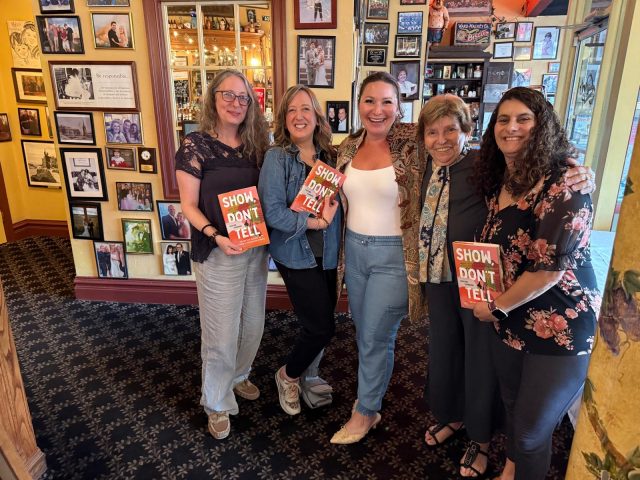The World Through Animal Eyes
- April 7, 2014
- By Christy Peterson
 There are dandelion flowers in my yard, which provide an early spring lunch for hungry insects, like bumblebees emerging from their winter naps. But where I see a single, bright burst of yellow, the bumblebee sees a flower with a light ring around the outside and a darker center—a bull’s-eye that shouts “eat here!”
There are dandelion flowers in my yard, which provide an early spring lunch for hungry insects, like bumblebees emerging from their winter naps. But where I see a single, bright burst of yellow, the bumblebee sees a flower with a light ring around the outside and a darker center—a bull’s-eye that shouts “eat here!”
We sort of take for granted that the world through our lenses is THE way to see things, even though we have some vague notion in the backs of our minds that other creatures see the world differently. When we think about this, we often have sympathetic thoughts for the “poor” animals that just can’t see the world as wonderfully as we can. Though it is true that our visual acuity is admirable, there are animals that see things that we cannot, or see the world in ways that we can only imagine.
How Color Vision Works
The ability to see color works more or less the same for all living things. Visible light is electromagnetic radiation within a specific wavelength range. Each color represents a different wavelength. When light hits an object, some wavelengths are absorbed and others bounce back. This creates what we call color.
Specialized nerve cells at the back of the eye, called cones, detect certain wavelengths of light. The most common cones are those that detect red, blue, and green. When stimulated, these cells send signals to the brain, where they are interpreted into an image.
Humans have three types of cones—red, blue, and green. Light bouncing off a purple sweater stimulates the both the red and blue cones. This overlap, together with the rods, which perceive black and white, allows us to see millions of colors. However, some animals possess cones that are able to detect ultraviolet wavelengths (wavelengths shorter than visible light) and other animals are able to detect infrared wavelengths (wavelengths longer than visible light). Additionally, some birds have cones other than those previously mentioned, meaning they can see colors we cannot.
Fun with Animal Eyes and Vision
Now that we understand a little about how color vision works in humans and animals, let’s have a little fun with it. Here are some coloring activities that give students a sense of animal vision.
Bumblebees
Bees have cones for yellow, blue, and ultraviolet light. This means they see wavelengths we cannot, in addition to blues and yellows and mixes of those two colors. Because bees have compound eyes, the images they see are somewhat pixelated and their acuity is not as good as ours is, meaning the image they see is slightly blurry. Still, the UV information in particular guides them to the nectar they need, as most flowers have patterns in the UV range that we can’t see.
Activity: download a simple flowering coloring page, or use one you already have. Have the students color the flower the way humans see it and the way bumblebees see it (see link below for example).
Dogs
Contrary to myth, dogs do see color. They possess blue and yellow cones, but not red. Their visual acuity is lower, meaning their vision is much blurrier than ours is, but they are able to detect motion far better than we do, and they see better in low light.
Activity: show students a large color photograph or poster and discuss how the poster would look to a dog. Have them select crayons or markers and draw a picture for their dog or a friend’s dog (remember—no reds, oranges, purples, etc.!). See link below for example of dog vs. human vision.
Birds
You might be feeling a little sorry for animals—many seem to have gotten the short end of the stick, at least in the sense of visual acuity. But now it’s time to talk about birds. Birds have at least four types of cones: UV, blue, red, and yellow. Some sources say they have even more. This means that we can’t even really get our heads around what a bird really sees (the link below will give a possible approximation). In addition, birds have oil droplets around their cones. We don’t know for sure what the function of the oil is, but we think it might help them see color even better!
Activity: in many bird species, the males and the females look (to us) exactly the same. Recent research suggests that when seen in UV light, the sexes do look different. Print out the chickadee coloring page (see link below), along with an image of a chickadee for reference (see link below). Have students color their chickadee page the way they think another chickadee would see it.
Links
- Bee vision vs. human vision: http://www.visualnews.com/2013/04/08/hidden-patterns-how-a-bee-sees-the-world-of-flowers/
- A stunning UV shot of a flower demonstrating what bees can see that humans cannot (without a little technical help!): http://www.flickr.com/photos/kds315/5324251644/in/gallery-carlzeisslenses-72157625902923708/
- Dog vision vs. human vision: http://www.mnn.com/earth-matters/animals/photos/how-does-a-dog-see-the-world/houndsight-isnt-2020
- Bird vision vs. human vision: http://www.nature.com/scitable/blog/the-artful-brain/alternate_realities
- Chickadee coloring page: http://www.kidzone.ws/geography/usa/massachusetts/chickadee2.gif
- Chickadee: http://www.allaboutbirds.org/guide/black-capped_chickadee/id
- More about animal senses in this link from New Scientist: http://www.newscientist.com/special/crittervision
- Animal Eyes—PDF from the Museum of Vision: http://www.museumofvision.org/dynamic/files/uploaded_files_filename_5.pdf


